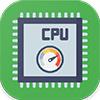 Estimated results for PassMark CPU Mark
Estimated results for PassMark CPU Mark
|
|
AMD EPYC 7453
28C 56T @ 2.75 GHz
|
50214
|
|
|
Intel Xeon E5-2680 v3
12C 24T @ 2.5 GHz
|
15348
|
 Geekbench 5, 64bit (Multi-Core)
Geekbench 5, 64bit (Multi-Core)
|
|
AMD EPYC 7453
28C 56T @ 2.75 GHz
|
22896
|
|
|
Intel Xeon E5-2680 v3
12C 24T @ 2.5 GHz
|
9658
|
 Geekbench 6 (Multi-Core)
Geekbench 6 (Multi-Core)
|
|
AMD EPYC 7453
28C 56T @ 2.75 GHz
|
11589
|
|
|
Intel Xeon E5-2680 v3
12C 24T @ 2.5 GHz
|
8053
|
 Geekbench 6 (Single-Core)
Geekbench 6 (Single-Core)
|
|
AMD EPYC 7453
28C 56T @ 2.75 GHz
|
1448
|
|
|
Intel Xeon E5-2680 v3
12C 24T @ 2.5 GHz
|
1041
|
 Geekbench 5, 64bit (Single-Core)
Geekbench 5, 64bit (Single-Core)
|
|
AMD EPYC 7453
28C 56T @ 2.75 GHz
|
1285
|
|
|
Intel Xeon E5-2680 v3
12C 24T @ 2.5 GHz
|
908
|

